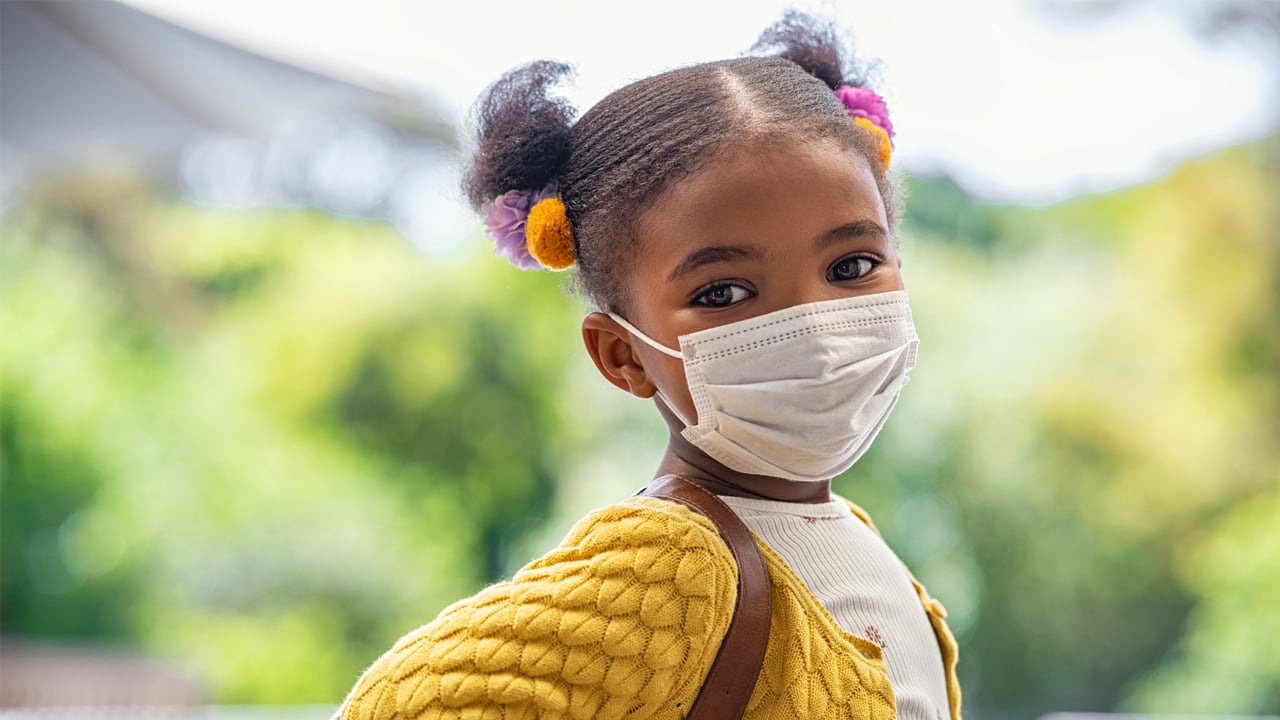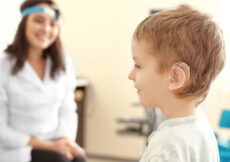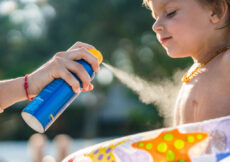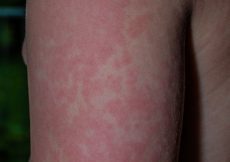Pandemic mask-wearing has always been important, but when it comes to protecting against the Delta variant Earl Rubin, director of Montreal Children’s Hospital infectious diseases department, says masks are crucial. “The infectivity is so much higher,” says Rubin, meaning it’s much easier for someone infected with the Delta variant of COVID-19, compared to earlier variants, to pass it on to someone else. And for kids under 12 who can’t be vaccinated, masks are even more important as a line of defence against COVID-19.
Here are seven key things to consider when masking up your little ones, especially as they head back to school this fall.
Make sure they’ll wear their masks
Cloth or surgical, two layers or three, it’s all irrelevant if your kid won’t actually wear the mask. That’s why Ottawa public health nurse Katie Souliere says the best mask for kids is one that they’ll wear. Let your kid participate in choosing colours and patterns online or in the store and try a few styles at home to make sure they are comfortable and they fit properly before loading up on a bunch of the same mask.
Focus on fit
The main purpose of a face mask is to protect others (and the wearer) from potentially infectious droplets and aerosols that are released from our mouths and noses when we do things like cough, sneeze, laugh and speak loudly. If there are gaps around the nose, chin and cheeks, there’s room for those droplets and aerosols to escape and the mask becomes much less effective. Toronto paediatrician Dina Kulik says a mask, whether cloth or medical, should sit comfortably above your kid’s nose, below the chin, and snug around their ears with no gaps around the cheeks, nose or chin. If the mask stays in place while your kid is talking or running and they aren’t constantly adjusting or fiddling with the mask, Kulik says the fit is good.
If your kid complains about the mask hurting behind their ears or you can see visible indentations on their face, Souliere says the mask is probably too tight. If the mask has adjustable ear loop sliders, try extending them a bit to improve the fit and if it’s still too tight it’s probably time to size up. If the mask is slipping down your kid’s face, it’s too big. You can try to pinch the metal nosepiece (if the mask has one) to make the fit more secure, as well as tighten the ear loop sliders, but if it’s still falling down or you’re noticing big gaps between the mask and your child’s face, you need a smaller mask.
Material matters
Both cloth masks and disposable medical/surgical masks are good options, as long as they fit properly. Rubin’s preference is medical masks because they’re regulated and have standardized filtration levels, but for cloth masks—which both Kulik and Souliere say work perfectly fine as well—you need to pay attention to what they’re made of.
Look for products where both the inner (the one touching your face) and outer layers are made from a tightly woven, breathable fabric like cotton or linen. (If you hold your mask up to the light, you shouldn’t be able to see through it.) Souliere suggests avoiding fabric with widely stitched seams and you also want the mask to have an inner filter made of something like non-woven polypropylene, which helps catch tiny infectious particles.
Don’t buy masks with vents as respiratory droplets can escape through the hole in the fabric. Souliere also says to steer clear of masks with a vertical seam along the nose and mouth, as droplets could leak through the break in the material. Masks with horizontal pleats are fine, and the pleats should face downwards on the wearer. The CDC recommends both medical and non-medical face masks have a metal nose wire.
Layer up
Whether you choose surgical/medical procedure masks or cloth masks for your kid, three-layer masks (where the third layer is a filter) are best. If you still have some two-layer masks lying around from the beginning of the pandemic and want to use those as well, that’s OK too, as long as they fit well and you don’t go below two layers (but three layers is optimal).
It’s important to note that the terms “layers” and “levels” don’t mean the same thing when it comes to surgical/medical procedure masks. While “layers” refers to the amount of fabric sheets within the mask, “levels” actually refers to things like filtration and fluid protection. Rubin says level 1 or 2 masks provide enough protection for everyday wear.
Let’s talk N95 and KN95s
Rubin says N95 and KN95 masks aren’t necessary for anyone not in a medical setting, but if you still want to send your kid to school in something like a KN95 or KF94 (the latter being like a cross between a cloth mask and an N95, and is easier to wear), here’s what you need to know.
The CDC explains that for an N95 to function effectively, it needs to be properly fitted to a person’s face via a mask fit-test, plus checked for an appropriate seal. If the N95 isn’t adequately fitted and there are gaps between the person’s face and the mask, this allows particles to both exit and enter the mask more easily, which then renders the mask pretty useless.
While not a replacement for an actual fit-test, you can have your kid put on one of these types of masks and blow into it while your hands are cupped around the outside of the mask. If you feel air flowing through the sides, top, or bottom of the mask, it’s too loose. Remember, though, that a tighter-fitting KN95 or KF94 might be more irritating for a child to wear all day, so again, it’s important to prioritize both fit and comfort over anything else when choosing the best mask for your kid. One they’ll wear is better than one they won’t.
Get your kid on board
While most kids have probably become familiar with mask-wearing at this point, it may still be difficult for them to keep them on all day at school. To help make it a smooth transition, Souliere says you should talk positively about masks at home and explain why wearing masks is important (i.e. to protect yourselves and others from becoming sick).
Watch your kid when they’re wearing their mask, for example, at a grocery store, to gauge how comfortable they’ll be masking all day at school. If they’re already fidgeting with the mask a few minutes in and you can tell it’s bothering them, try a different mask next time.
Keep masking your kids
Whether or not it’s required for your kid to wear a mask at school, the consensus among the experts we spoke to is you should probably mask regardless. “Masks still help, they will never hurt,” says Rubin.
Whether kids should wear masks when playing with other kids outdoors depends on case numbers in the community at the time according to Rubin: “If it’s relatively low, I would say they could take [the mask] off when they’re outside.” But if numbers start to spike again, Rubin says it’s best for kids to keep masks on outdoors, especially if they aren’t keeping distance between themselves and their playmates.
Wearing a mask isn’t the most comfortable for anyone but the extra layer of protection against the Delta variant is well worth it.



































